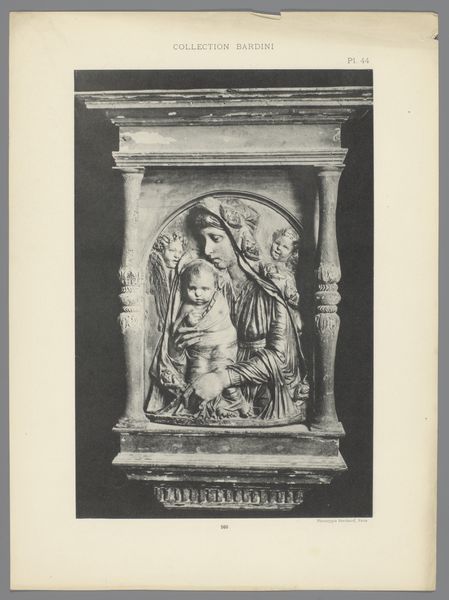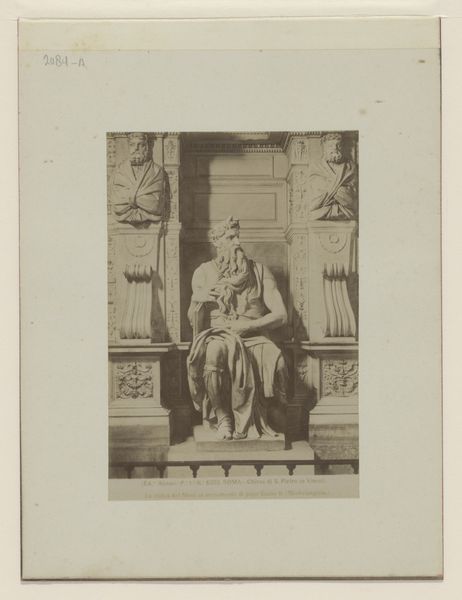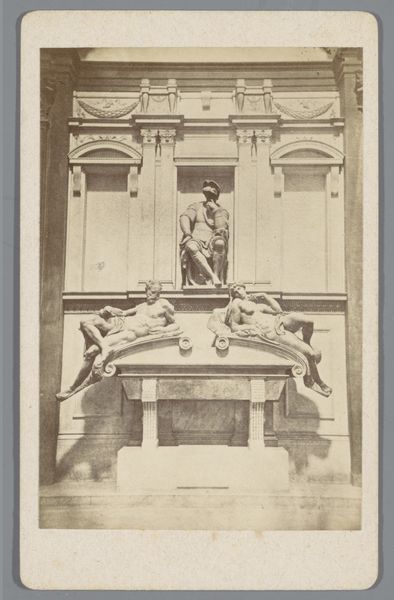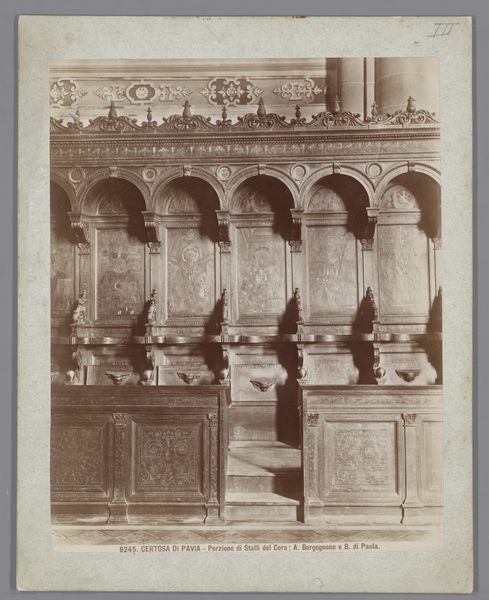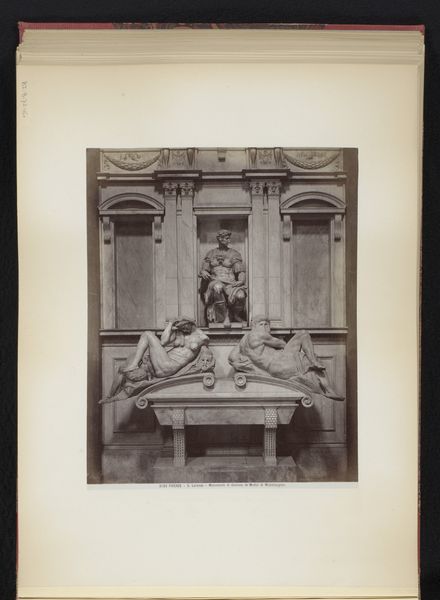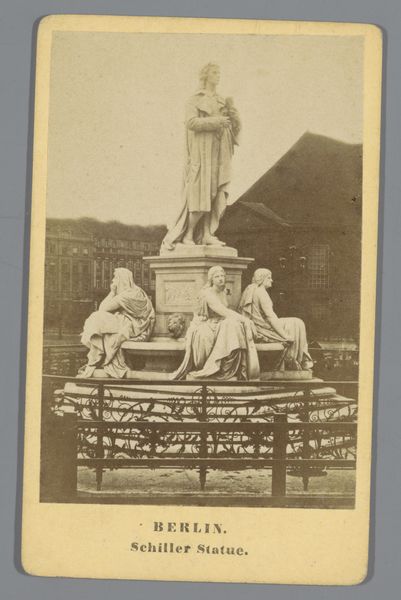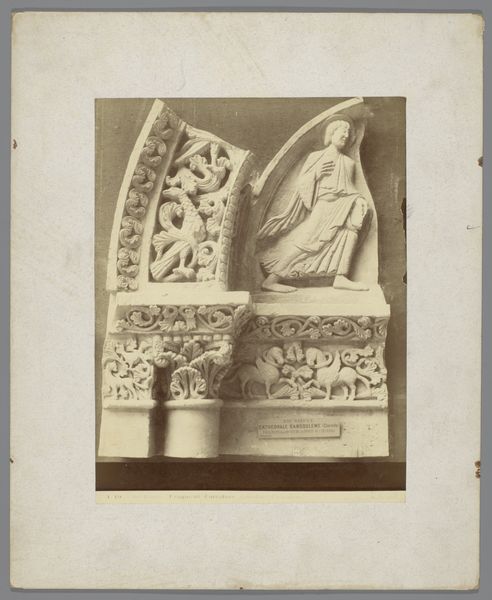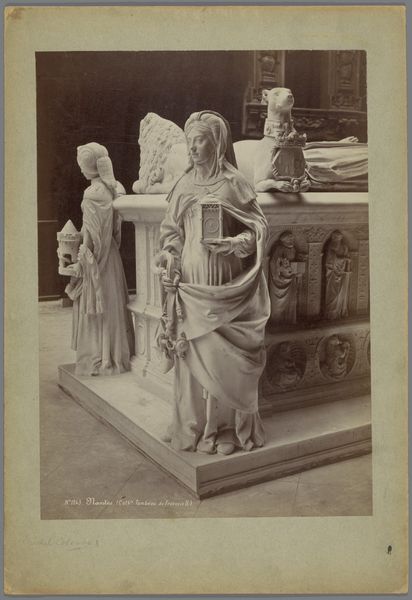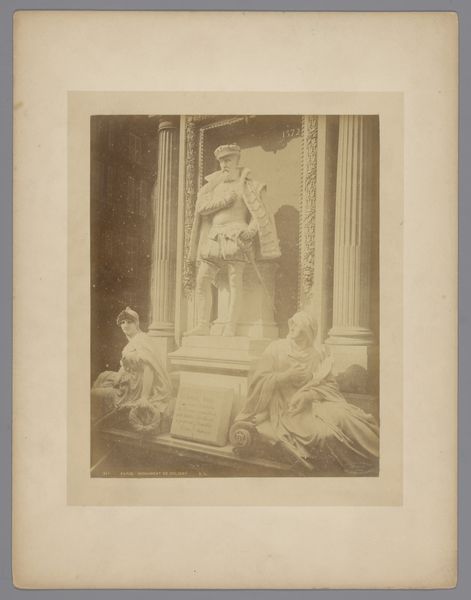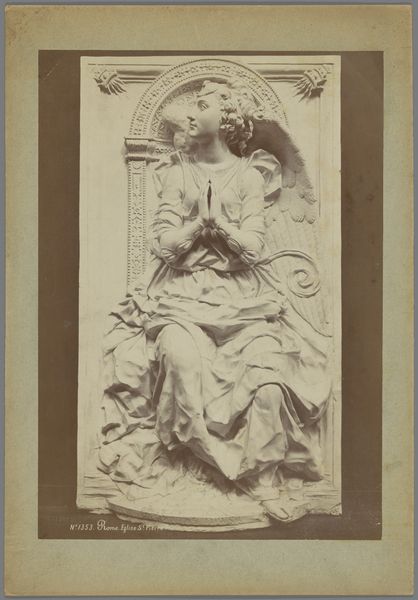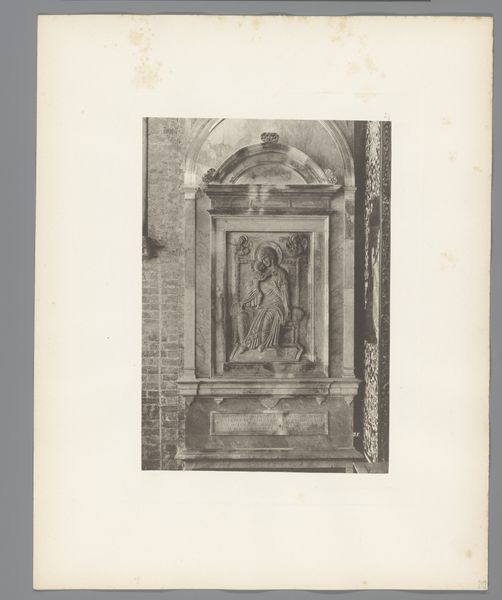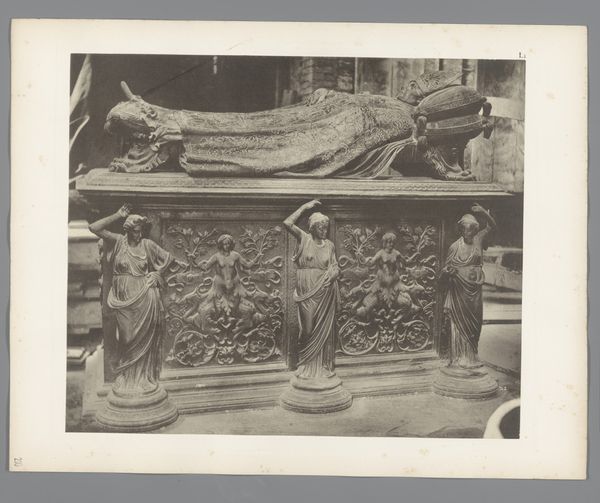
Afgietsel van de Mozesput in het Musée des Monuments français te Parijs c. 1875 - 1900
0:00
0:00
medericmieusement
Rijksmuseum
print, photography, sculpture, albumen-print
#
portrait
# print
#
sculpture
#
photography
#
sculpture
#
19th century
#
albumen-print
#
realism
Dimensions: height 447 mm, width 312 mm
Copyright: Rijks Museum: Open Domain
Curator: Let's discuss this fascinating albumen print, "Afgietsel van de Mozesput in het Musée des Monuments français te Parijs" by Médéric Mieusement, created sometime between 1875 and 1900. It’s currently held here at the Rijksmuseum. Editor: It's strangely compelling. I get this ghostly vibe, like a memory surfacing from centuries ago. It makes me feel calm and also kind of unsettled, like witnessing something profoundly significant yet not quite understanding its full weight. Curator: Well, consider the historical context. The image documents a cast of the Moses Fountain, a sculpture originally created in the late 14th century. Mieusement's photograph captures not the original, but a copy housed in a museum dedicated to French monuments. Think about the layers of representation here—a copy, photographed, then presented to us. Editor: Copies upon copies, a shadow of a shadow! It adds to that feeling, doesn't it? And the albumen print itself… the tones are beautiful. It gives a certain timelessness and gravitas that perfectly complements the sculptural figures. You almost expect them to move. Curator: The choice of medium is definitely key. Albumen prints were popular at the time for their sharp detail and tonal range. In terms of reading this artwork through a critical lens, the act of replicating and displaying monumental sculptures in a museum is deeply embedded in sociopolitical ideas. This practice speaks volumes about power dynamics in nineteenth-century art. Editor: Right, how these pieces get viewed by the masses and what it does to people’s perceptions... By capturing a monument within a monument, it raises fascinating questions about how history gets created, preserved, and, crucially, presented. And what does it mean to see it detached from its original setting? Is it diminished, or does the museum context lend it a new power? Curator: Exactly! That relocation inherently changes the discourse. Furthermore, considering the figures themselves—Moses and other prophets—we can examine how religious figures and narratives were co-opted by, and instrumentalized in, political ideologies. Editor: So much going on below the surface! I came in thinking it was just a cool old photograph, but it's this whole maze of social ideas tangled up in sepia tones. Makes you realize every artwork is practically shouting a story, even if it's in a whisper you've got to lean in close to hear.
Comments
No comments
Be the first to comment and join the conversation on the ultimate creative platform.
